One of the first things my husband and I bought when we moved in together was a huge microfiber sectional. Just like the sales lady said, that couch has withstood everything we’ve thrown at it, including 3 moves, 2 pets, 9 Super Bowls, a handful of parties and countless spills and stains over the years. But while it still has a ton of life left in it, it looks a little worse for the wear. The truth is, microfiber is super durable and pretty easy-to-clean, making it ideal for most people’s homes. But even so, it needs some TLC every now and then to keep it looking fresh and new. Here’s how to clean a microfiber couch without having to call in the big guns.
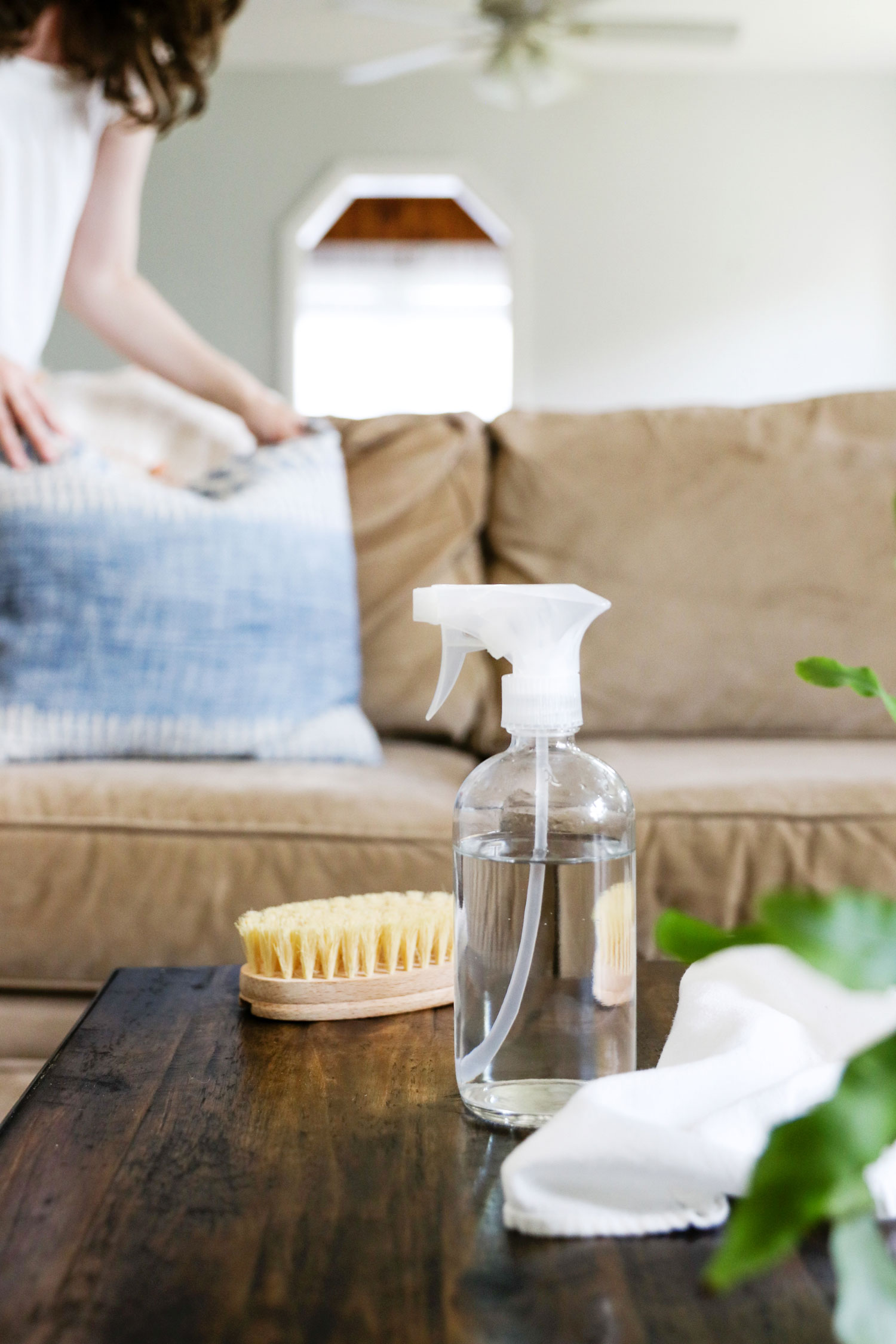
5 steps to clean a microfiber couch
1. Break out the vacuum
When trying to clean your sofa, there is no sense in rubbing surface dirt into the fabric. Unlike me, maybe you vacuum your couch more than twice a year (in which case you can skip this step). But for most of us, a good vacuuming can go a long way toward making your couch look cleaner. Start by getting rid of any crumbs, surface dirt, loose change and stray items tucked between the cushions.
2. Figure out your code
Cleaning microfiber isn’t as simple as just picking a cleaning solution and scrubbing away. Somewhere on your sofa (most likely under the cushions) is a tag with a 1 or 2-letter code that tells you exactly how to clean your couch. If you don’t find the cleaning code under the cushions, check all tags that might be attached to the sofa. If you removed the tags, with a little digging you should be able to find the information on the manufacturer’s website.
Here are the four potential cleaning codes:
S – Spot clean only with a water-free dry cleaning solvent. Absolutely, positively do not use water, as this can damage the fabric. You can sometimes find water-free dry cleaning solutions at some grocery or hardware stores, from a local carpet cleaner, or online. Spot clean a small area and always make sure to blow dry the wet spot in order to prevent a ring from forming.
W – You’re in luck! This means that you can spot clean your sofa with water or any ol’ water-based upholstery cleaner. Always pre-test a small area for color loss and fabric compatibility and don’t saturate the fabric. If you have a large area to clean (i.e., the entire sofa’s a mess) it’s best to call a professional upholstery cleaning service for deep cleaning.
SW or WS – This code means that you can use either dry cleaning solvents or water-based cleaners to clean your couch. If you have it, a solvent-based cleaner is safest, but water shouldn’t harm your sofa if used to spot clean. And it’s best to tackle small stains yourself and leave big cleaning jobs to the professionals.
X – Often seen on vintage pieces, this code means that you shouldn’t clean with a liquid cleaner at all (neither water nor solvent is safe for this kind of fabric). Instead, vacuum thoroughly with a stiff bristle brush and check with a local furniture restoration shop for the best way to clean stains.
 3. Spot clean
3. Spot clean
Like upholstery deodorizer spray, you can find upholstery cleaner at the store, but making your own is a fraction of the cost.
Solvent Cleaner
- 1 cup rubbing alcohol
- Spray bottle
Pour the rubbing alcohol into the bottle and screw on the top.
Water-based Cleaner
- 1 cup warm water
- 2 drops dish soap
- 1 tablespoon white vinegar
- Pinch baking soda
- Spray bottle
Combine everything in a spray bottle and gently shake to combine.
Spray your cleaning solution over the dirty portion of your sofa. Blot the areas with a clean cloth to lift dirt and stains out of the fabric. For extra stubborn stains, I’ll use a strong sponge to gently scrub the stained area until it’s clean. Repeat until stains are gone.
4. Fluff fibers with a bristle brush
After cleaning microfiber, the fabric tends to be rather stiff after it dries. Grab a natural bristle brush and gently comb the fibers until they’re soft and fluffy again.
5. Protect your sofa
If your sofa is in a high-traffic area, you might want to treat it with a spray-on fabric protector to keep it clean longer. Make sure to choose a water-based or solvent-based sealant based on your sofa’s cleaning code.
37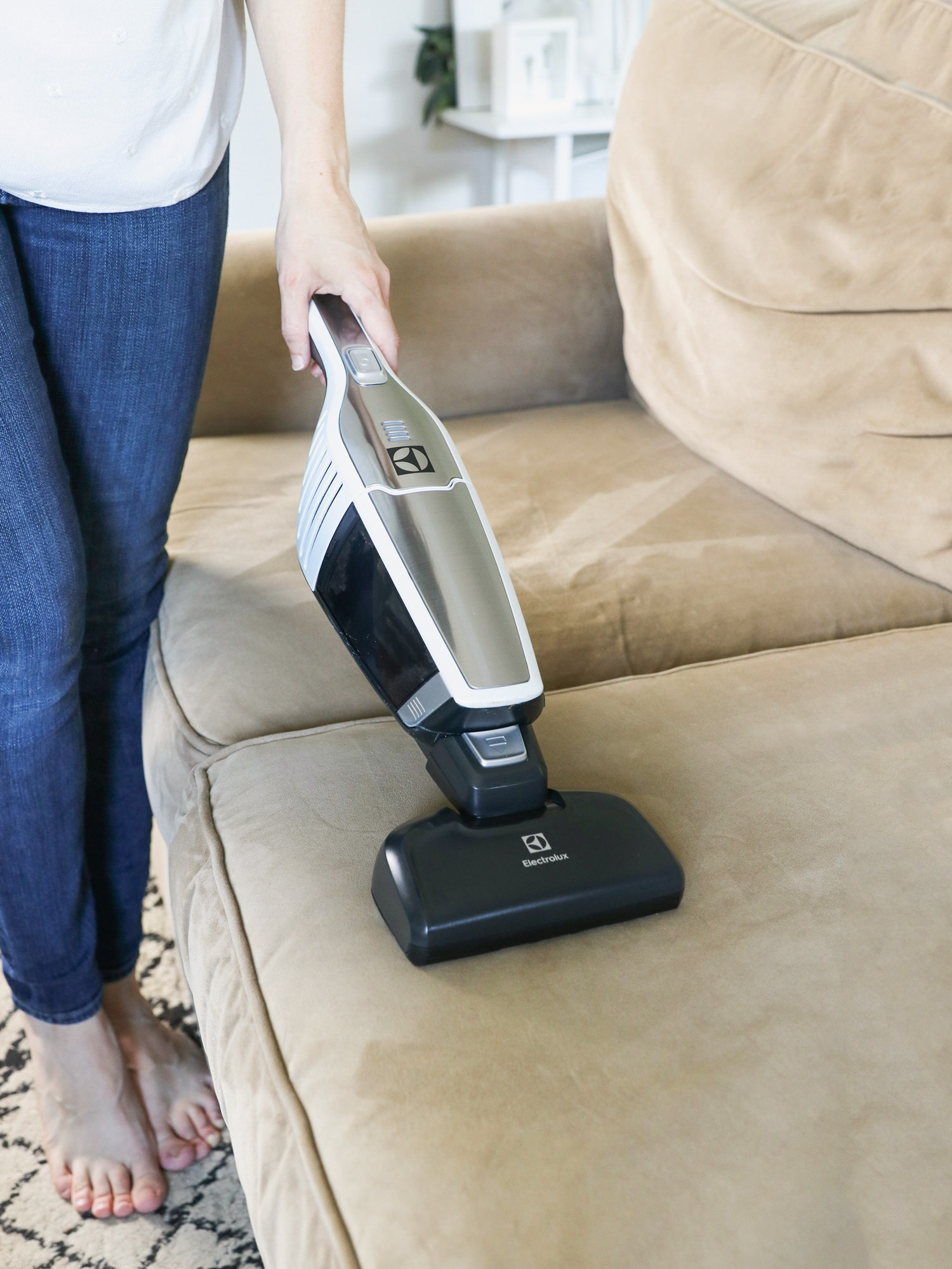
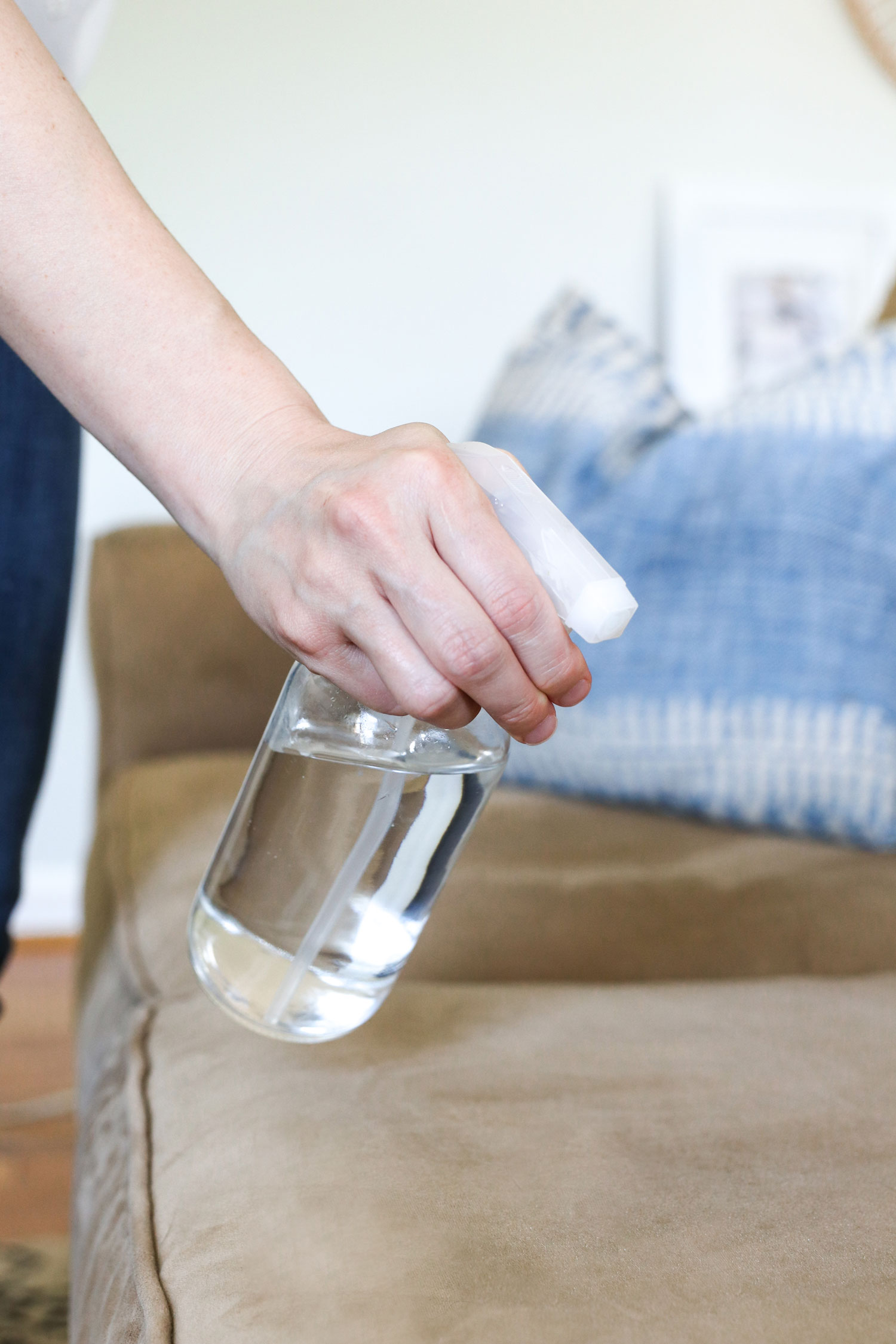
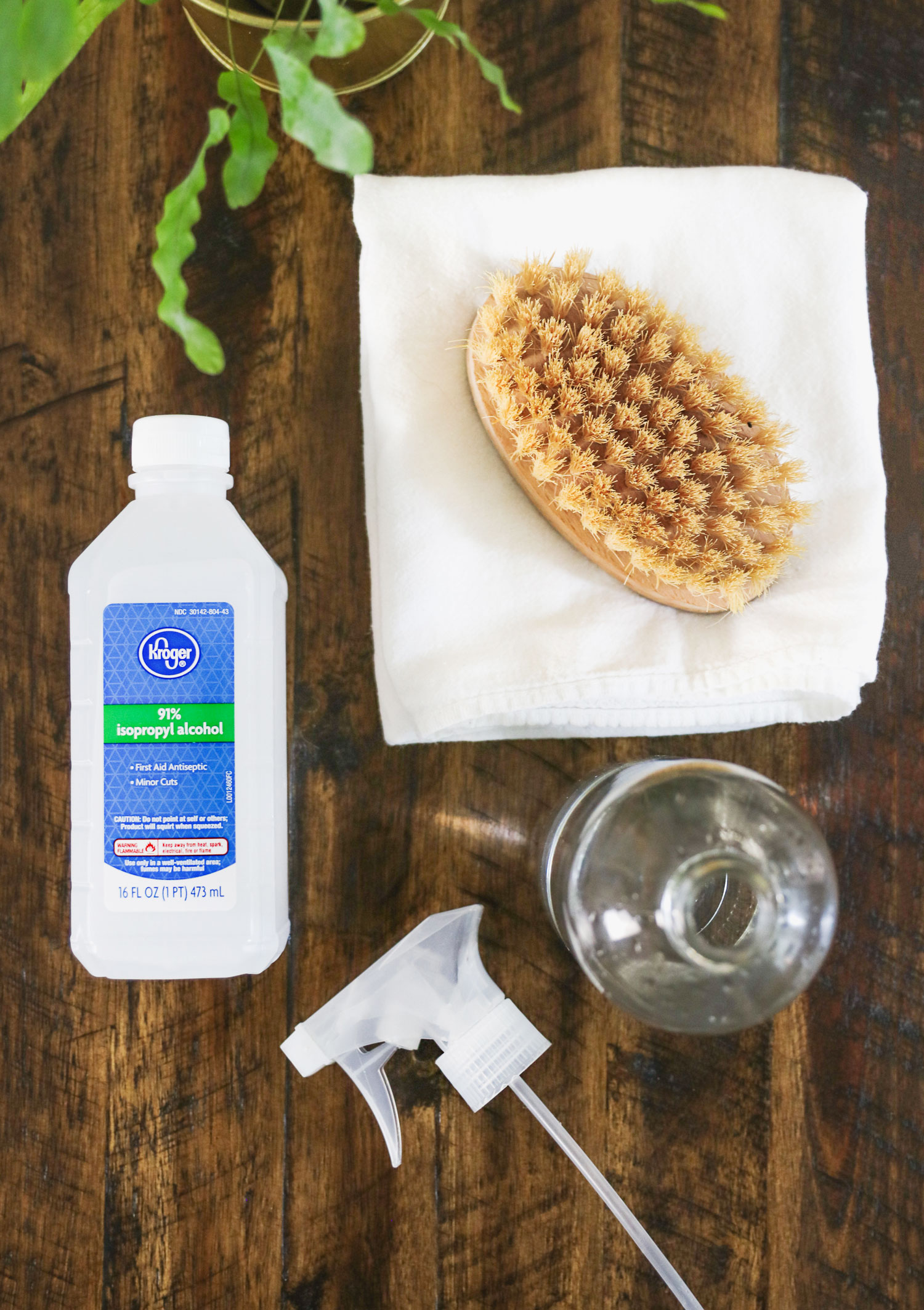 3. Spot clean
3. Spot clean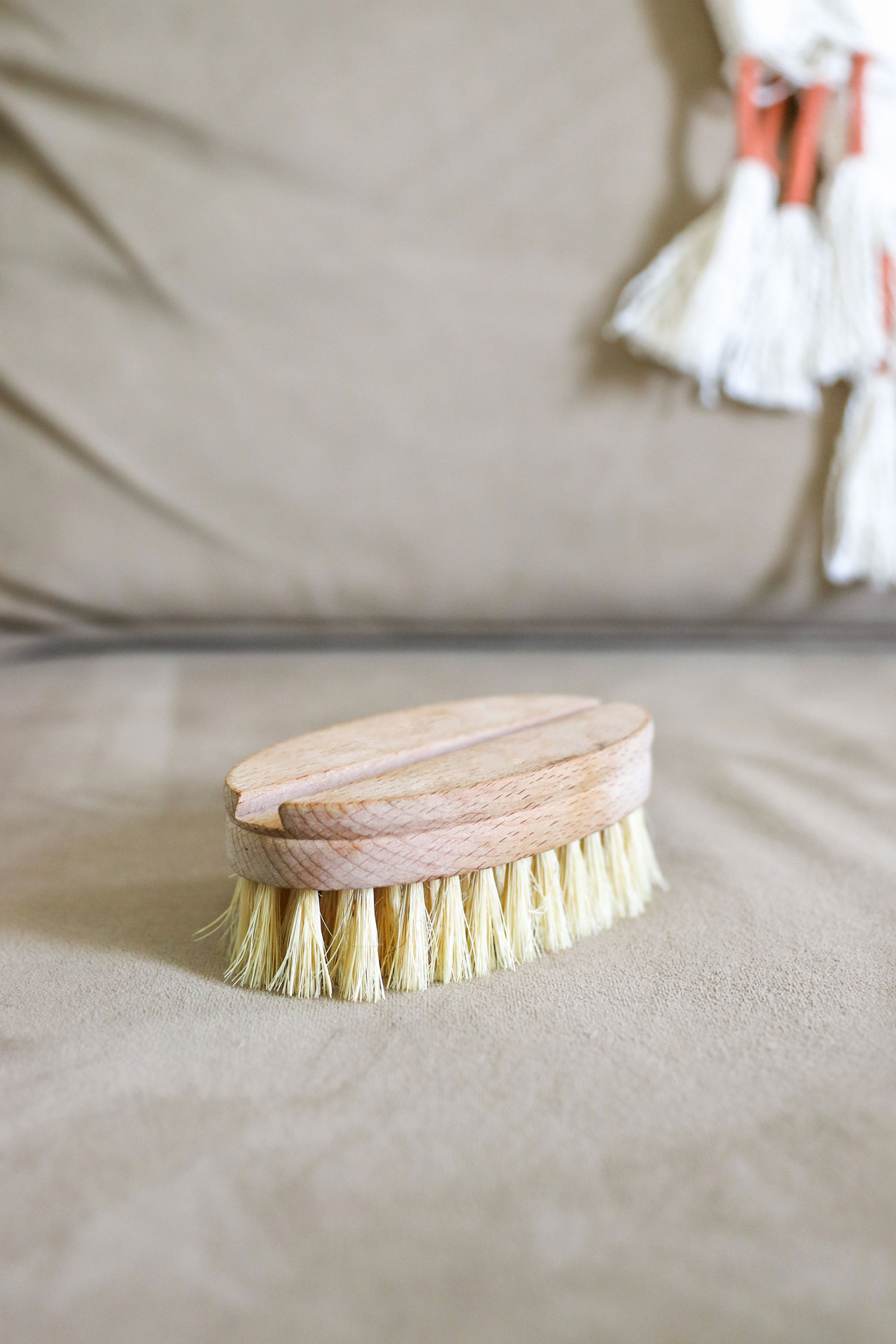
Leave a Reply